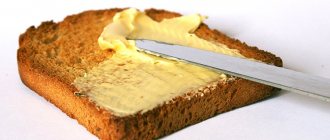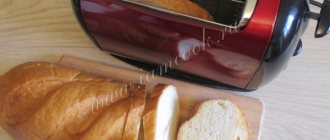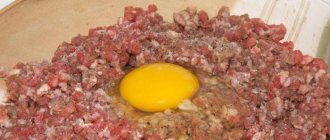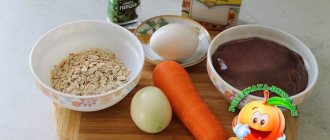Are you already running to the gym? Wait
Our calculations should not be taken to heart: in any case, there will be discrepancies with reality.
Firstly, because the calorie content of your Olivier salad depends on its exact recipe: what if you put more carrots there and didn’t put sausage at all? Secondly, when calculating calorie consumption, we were guided by the “average working man of Minsk”: he is 35 years old, his height is 174 cm, and his weight is 73 kg. If your build differs from the statistics, then your energy costs will be different.
There is a third reason: everything in our body is not so simple. As nutritionists explain, the body does not know how to burn calories just like that, for the sake of “working off” what it has eaten - each one is spent according to a strict internal schedule, and an extra half hour on the track will almost certainly not burn off that yesterday’s cake.
Pork sausage in other servings:
318
3.18
| Qty | A portion | Calories | In the counter |
| 100 g | 318 | ||
| 1 g | 3.18 | ||
| 90 | 1 ounce = 28.26g | 90 | |
| 1091 | 1 package = 343g | 1091 | |
| 167 | 1 serving = 52.5g | 167 |
Table of composition (proteins, fats, carbohydrates) and calorie content of foods
For reference. Calorie content is the amount of energy received by a person as a result of the absorption of a particular product. The number of calories a person needs depends on the work performed, physical activity, gender, age, latitude (cold or hot climate). Like any fuel, food products, when burned in the body's furnace, release energy. Therefore, food has a certain energy value that can be measured (for example, in kilocalories or joules). Therefore, another name for the energy value of food products is calorie content. Each of us has more than once seen on the factory packaging of store-bought products a number that corresponds to the energy value of 100 g of this product. Anyone can calculate how much energy their body will receive after consuming a certain amount of a product.
Knowing someone's daily diet, that is, the number of foods eaten per day, including drinks, and their energy value, it is easy to calculate the amount of energy received - the calorie content of the daily diet. Biochemists and nutritionists have long calculated the calorie content and composition of almost all food products.
It is simply impossible to provide for all the variety of food. However, taking into account the information on food labels, calculating the calorie content of the daily diet does not present serious difficulties.
The weight of one piece of black bread is about 35 grams, and a piece of white bread weighs about 25 grams. A slice of loaf weighs 20 grams.
A piece of black bread weighs 35 g, and a piece of white bread weighs about 25 g.
Bread is one of the most important foods on our table, present at every meal. Indeed, a slice of fragrant black bread ideally “sets off” the taste of aromatic borscht. And what a delicious breakfast you can have with a piece of fresh white loaf, spread with honey or butter. And it’s impossible to imagine preparing a variety of canapés and sandwiches without bread. Of course, many nutritionists argue that due to its high nutritional value, it is better to completely exclude bread from the diet. However, today the range of bakery products is so wide that you can easily choose a product with a low calorie content. To correctly calculate the calorie content of a serving, you need to know how much a piece of bread weighs, as well as the calorie content in 100 grams of the product.
Calorie content of homemade sausage. Chemical composition and nutritional value.
Nutritional value and chemical composition of “homemade sausage”.
The table shows the nutritional content (calories, proteins, fats, carbohydrates, vitamins and minerals) per 100 grams of edible portion.
| Nutrient | Quantity | Norm** | % of the norm in 100 g | % of the norm in 100 kcal | 100% normal |
| Calorie content | 359.5 kcal | 1684 kcal | 21.3% | 5.9% | 468 g |
| Squirrels | 15.9 g | 76 g | 20.9% | 5.8% | 478 g |
| Fats | 28.9 g | 56 g | 51.6% | 14.4% | 194 g |
| Carbohydrates | 1.63 g | 219 g | 0.7% | 0.2% | 13436 g |
| Water | 53.15 g | 2273 g | 2.3% | 0.6% | 4277 g |
| Ash | 2.4 g | ~ | |||
| Vitamins | |||||
| Vitamin B1, thiamine | 0.502 mg | 1.5 mg | 33.5% | 9.3% | 299 g |
| Vitamin B2, riboflavin | 0.148 mg | 1.8 mg | 8.2% | 2.3% | 1216 g |
| Vitamin B5, pantothenic | 0.45 mg | 5 mg | 9% | 2.5% | 1111 g |
| Vitamin B6, pyridoxine | 0.19 mg | 2 mg | 9.5% | 2.6% | 1053 g |
| Vitamin B9, folates | 2 mcg | 400 mcg | 0.5% | 0.1% | 20000 g |
| Vitamin B12, cobalamin | 0.98 mcg | 3 mcg | 32.7% | 9.1% | 306 g |
| Vitamin C, ascorbic acid | 1 mg | 90 mg | 1.1% | 0.3% | 9000 g |
| Vitamin RR, NE | 3.443 mg | 20 mg | 17.2% | 4.8% | 581 g |
| Macronutrients | |||||
| Potassium, K | 237 mg | 2500 mg | 9.5% | 2.6% | 1055 g |
| Calcium, Ca | 12 mg | 1000 mg | 1.2% | 0.3% | 8333 g |
| Magnesium, Mg | 14 mg | 400 mg | 3.5% | 1% | 2857 g |
| Sodium, Na | 876 mg | 1300 mg | 67.4% | 18.7% | 148 g |
| Sera, S | 141 mg | 1000 mg | 14.1% | 3.9% | 709 g |
| Phosphorus, P | 136 mg | 800 mg | 17% | 4.7% | 588 g |
| Microelements | |||||
| Iron, Fe | 1.44 mg | 18 mg | 8% | 2.2% | 1250 g |
| Manganese, Mn | 0.049 mg | 2 mg | 2.5% | 0.7% | 4082 g |
| Copper, Cu | 90 mcg | 1000 mcg | 9% | 2.5% | 1111 g |
| Selenium, Se | 17.7 mcg | 55 mcg | 32.2% | 9% | 311 g |
| Zinc, Zn | 1.93 mg | 12 mg | 16.1% | 4.5% | 622 g |
| Essential amino acids | |||||
| Arginine* | 0.925 g | ~ | |||
| Valin | 0.679 g | ~ | |||
| Histidine* | 0.444 g | ~ | |||
| Isoleucine | 0.611 g | ~ | |||
| Leucine | 1.076 g | ~ | |||
| Lysine | 1.11 g | ~ | |||
| Methionine | 0.379 g | ~ | |||
| Threonine | 0.591 g | ~ | |||
| Tryptophan | 0.138 g | ~ | |||
| Phenylalanine | 0.539 g | ~ | |||
| Nonessential amino acids | |||||
| Alanin | 0.902 g | ~ | |||
| Aspartic acid | 1.293 g | ~ | |||
| Glycine | 0.992 g | ~ | |||
| Glutamic acid | 2.117 g | ~ | |||
| Proline | 0.712 g | ~ | |||
| Serin | 0.584 g | ~ | |||
| Tyrosine | 0.444 g | ~ | |||
| Cysteine | 0.157 g | ~ | |||
| Sterols (sterols) | |||||
| Cholesterol | 70 mg | max 300 mg | |||
| Saturated fatty acids | |||||
| Saturated fatty acids | 10.33 g | max 18.7 g | |||
| 10:0 Kaprinovaya | 0.07 g | ~ | |||
| 12:0 Lauric | 0.07 g | ~ | |||
| 14:0 Miristinovaya | 0.4 g | ~ | |||
| 16:0 Palmitinaya | 6.4 g | ~ | |||
| 18:0 Stearic | 3.38 g | ~ | |||
| Monounsaturated fatty acids | 13.52 g | min 16.8 g | 80.5% | 22.4% | |
| 16:1 Palmitoleic | 0.95 g | ~ | |||
| 18:1 Oleic (omega-9) | 12.58 g | ~ | |||
| Polyunsaturated fatty acids | 3.08 g | from 11.2 to 20.6 g | 27.5% | 7.6% | |
| 18:2 Linolevaya | 2.79 g | ~ | |||
| 18:3 Linolenic | 0.29 g | ~ | |||
| Omega-3 fatty acids | 0.29 g | from 0.9 to 3.7 g | 32.2% | 9% | |
| Omega-6 fatty acids | 2.79 g | from 4.7 to 16.8 g | 59.4% | 16.5% |
The energy value of homemade sausage is 359.5 kcal.
Primary Source: Created in the application by the user. Read more.
** This table shows the average levels of vitamins and minerals for an adult. If you want to know the norms taking into account your gender, age and other factors, then use the “My Healthy Diet” application.
How much does one piece of different types of bread weigh?
Traditionally, domestic bakery products are divided into bread (black and white), loaves and buns. The weight of the bread is determined by the type, shape and baking method. Let's study the weight of a slice of bread of different types using the following table.
| Product type | Weight, g | Mass of a piece of bread, g |
| Black bread (brick) | 650 — 750 | 35 |
| White bread (brick) | 500 | 25 |
| Mustard loaf | 350 — 400 | 20 — 22 |
The weight of these bakery products is determined by the technical conditions (TS) of the enterprise. As you can see, black bread weighs more than white bread - and accordingly, a slice of black bread is also heavier.
Application
Since this type of sausage is considered the most high-calorie and has a very high percentage of fat content, you should not overuse salami. Moreover, nutritionists and gastroenterologists strongly recommend limiting the consumption of salami, especially for people suffering from stomach and intestinal diseases.
Salami is a very popular type of sausage, which is a delicacy and is most often consumed in its finished form. But salami is often used in making pizza. This sausage is added to various salads, soups and appetizers to give the dish its characteristic salami flavor. Salami goes well with Italian cheeses.
Market Analytics
- Global cosmetics market 2021: an unprecedented test for the global cosmetics industry
- Top 10 Cosmetic Research and Development of 2021
- 2020 in the beauty industry – innovation without borders
Convenient search for beauty salons on our website
Beauty salons in Moscow Beauty salons in St. Petersburg Beauty salons in Ekaterinburg Beauty salons in Novosibirsk
Latest blog posts on our website
- Naturecream / Properties of the “Sunny” oil itself
- Naturecream / “Sugar” wrinkles - or what glycation can do
- Naturecream / Esterified oils
- Naturecream / Arnica - the magical plant of alchemists
- Naturecream / Tremella Extract - Snow Mushroom Detox for Skin
- Prostye-sovety / How to visually enlarge your lips with makeup
- Naturecream / Apricot kernel oil for face
- Naturecream / MATRIXYL3000 - the best skin elasticity stimulator
- Naturecream / SPF in Natural Oils
- Naturecream / Geranium (Pelargonium) oil for skin health and beauty
Latest forum topics on our website
- Natalya / How to properly make a gelatin mask?
- Mrs._Smith / Badly sunburned! What to do?((
- Ice / Is it necessary to combine fitness classes with a diet?
- Antonova / What can be used for hair loss?
- Radio operatorKat / Who was on a protein diet?
Other articles in this section
| Boiled Moscow sausage Boiled Moscow sausage is a traditional food product that is in constant demand. The main components of this sausage are beef, pork fat, milk, starch, salt, animal protein, black or white pepper, and spices. |
| Milk sausages Back in the 19th century, Austria and Germany were the first to come up with a new meat dish - milk sausages. When making this type of food, any meat (beef, pork, poultry) is taken, crushed and boiled, adding milk powder. Some manufacturers replace natural raw materials - meat with products containing vegetable protein or meat substitute. Natural sausages are smooth and elastic, pale pink in color. |
| Doctor's Boiled Sausage Undoubtedly, Doctor's Boiled Sausage is one of the most popular and widespread types of sausages, for the production of which natural minced meat, ground to a homogeneous consistency, and packaged in a food casing is used. |
| Raw smoked Stolichnaya sausage Raw smoked Stolichnaya sausage belongs to one of the varieties of dry smoked sausages of the highest grade, with a characteristic pronounced meat aroma, a spicy, classic soft, slightly salty taste and delicate texture. |
| Boiled tea sausage It is no coincidence that boiled tea sausage got its name. In the 19th century, one of the mandatory components included in its composition was tea, added to the sausage as a spice. Over time, the technology for producing this delicacy has changed, and the use of tea as an ingredient has long ceased, leaving only its name. Which, by the way, is also explained by the fact that, due to its low cost, boiled tea sausage was generally available to the wide mass of consumers, serving as an excellent addition to morning breakfast or tea. |
| Boiled pork sausage Boiled sausage – prepared from salted minced pork and spices (garlic, pepper and salt). Minced meat is boiled at 80 degrees. Next, it is placed in a cellulose or protein shell. According to standards, the color of minced sausage varies from light pink to dark pink. |
| Semi-smoked Ukrainian sausage Semi-smoked Ukrainian sausage is made from pork, beef, lard and seasonings (pepper, cumin, garlic, coriander). Unlike boiled sausage, half-smoked sausage has minced meat in the casing that is compacted even more tightly. After the frying and boiling procedure, such sausages are smoked for about 20 hours at a temperature of 30-50 degrees, after which they are cooled and dried. |
| Boiled-smoked sausage servelat boyarsky Boiled-smoked sausage servelat Boyarsky is prepared according to the classic recipe from chilled chicken meat. Cervelat Boyarsky has high taste qualities. The product must be stored in the refrigerator at a temperature of 0 to 6 degrees; the shelf life should not exceed 15 days. |
| Boiled-smoked sausage servelat Russian Boiled-smoked sausage servelat Russian is a high-quality product made from chicken meat and lard, with the addition of spices and herbs. Russian servelat sausage is made according to a traditional recipe using natural seasonings. This type of sausage has been known for many years and is in great demand among consumers. This is explained by the low price of the product combined with the pleasant taste and aroma of cervelat. Sausages in Russia occupy a certain niche among consumers. And, despite numerous arguments from gastroenterologists, this product continues to appear in the refrigerators of sausage lovers. |
| Chicken sausages Sausages are the most commonly consumed product that is prepared in a hurry. We can’t talk, of course, about their exceptional usefulness, but they have been part of our lives for a long time. Sausages are small sausages made from minced meat. |
How many calories are in a piece of bread?
Usually you think about the mass of each piece of bread when you are on a certain diet - when you are “counting every calorie.” However, nutritionists do not advise completely excluding bread from the diet, since in this way you can “voluntarily” deprive yourself of many useful vitamins necessary for the full functioning of the body.
So, an excellent solution would be to reduce the daily consumption of bread and replace various loaves of buns with less nutritious types - for example, rye bread with bran. Here are the reasons why you should include bread in your daily menu:
- A piece of bread weighing 200 grams is the minimum daily “dose” of proteins for an adult. At the same time, we take into account that there are more calories in white bread than in black bread.
- A sandwich with a slice of lean meat, a leaf of green salad and a slice of tomato will not only not harm your figure, but will also be an excellent snack. But it’s better to refuse Big Macs and other McDonald’s “products”.
- Bread with bran helps normalize the functioning of the gastrointestinal tract.
How to calculate the calorie content of a slice of bread? You don't need scales for this, just knowing the weight of 1 piece of bread is enough. For example, the mass of a slice of bread is 40 grams, and its thickness is about 0.5 cm. So it is quite possible to do without a ruler and other measuring instruments and determine the portion “by eye”.
Composition of nutrients, BJU
Pork sausage
| For quantity: 100 grams | ||
| Calories — 318 | Calories from fat - 247 | |
| BJU | ||
| Total fat content | 27.42g | |
| Saturated | 9.16g | |
| Polyunsaturated | 3.91g | |
| Monounsaturated | 12.07 | |
| Cholesterol | 83mg | |
| Total carbohydrate content | 1.75g | |
| Dietary fiber | 0.01g | |
| Sugar | 0.45g | |
| Squirrels | 15.49g | |
| Vitamins and microelements | ||
| A - 708.22 µg | C - 0.26 mg | |
| B-6 – 0.23 mg | B-12 - 2.68mcg | |
| D - 1.15 µg | E - 0.59 mg | |
| Calcium 20 µg | Iron 2mg | |
| Magnesium 16.05 mg | Zinc 2.11mg | |
| Potassium 258 mg | Sodium 761 mg | |
Distribution of calories for BJU:Carbohydrates (4%) Fats (77%) Proteins (19%) | ||









